 1882. James Joyce was born in Dublin, the eldest of ten children. His father was a rather improvident tax collector. The family became progressively impoverished.
1882. James Joyce was born in Dublin, the eldest of ten children. His father was a rather improvident tax collector. The family became progressively impoverished.
1888. He was educated in Jesuit schools, with emphasis on Catholic and scholastic doctrine. [These establishments were also renowned for their intellectual rigour.] Joyce was a talented student, especially good at languages. He moved from being devout to bitterly anti-Catholic. These experiences were later used as material for his autobiographical novel, A Portrait of the Artist as a Young Man.
1893. Enters Belvedere College, a Jesuit boys’ day school – fees having been waived because of family’s needy circumstances.
1894. Joyce reads Lamb’s Adventures of Ulysses and writes theme on Ulysses as ‘my favourite hero’.
1897. Wins prize for best English composition in Ireland for his age group.
1898. Studies languages at University College, Dublin. Rebels against Church, Family, and the State. Begins to read Ibsen. Active campaigner for freedom of expression and equality for women.
1902 Leaves university to study medicine in Paris, but gives it up and writes reviews for newspapers.
1904. Back in Dublin following his mother’s death, Joyce meets Nora Barnacle on June 10, subsequently to be known as ‘Bloomsday’ and used as temporal setting for Ulysses. Opposed to marriage, but unable to live together because of moral climate at that time, they move to Trieste and live there for the next ten years. Joyce earns a precarious living teaching English at the Berlitz School of Languages.
1905. Joyce writing stories which are later collected as Dubliners, and Stephen Hero, a novel based on his own early life. Supported by his brother Stanislaus.
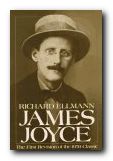 James Joyce is an acclaimed biography, considered by many to be the definitive account of Joyce’s life and work. Richard Ellmann has a sympathetic grasp of Joyce’s personality. A reverence for his literary accomplishment is balanced by a bemused affection for his weaknesses. Whether Joyce is putting the finishing touches to Ulysses, falling down drunk in the streets of Trieste, or writing erotic messages to his future wife, Ellmann’s account always shows us a genius and a human being. This latest edition has been revised and expanded to include newly discovered primary material, including details of a failed love affair, a limerick about Samuel Beckett, a dream notebook, and previously unknown letters.
James Joyce is an acclaimed biography, considered by many to be the definitive account of Joyce’s life and work. Richard Ellmann has a sympathetic grasp of Joyce’s personality. A reverence for his literary accomplishment is balanced by a bemused affection for his weaknesses. Whether Joyce is putting the finishing touches to Ulysses, falling down drunk in the streets of Trieste, or writing erotic messages to his future wife, Ellmann’s account always shows us a genius and a human being. This latest edition has been revised and expanded to include newly discovered primary material, including details of a failed love affair, a limerick about Samuel Beckett, a dream notebook, and previously unknown letters.
1907. Publishes Chamber Music (poems). Financial hardship partly self-induced as a result of erratic and improvident lifestyle. Eyesight problems begin.
1908. Begins revising Stephen Hero. Many unsuccessful attempts to have Dubliners published.
1909. Returns to Dublin and opens the city’s first cinema – the ‘Volta’.
1912. Lectures on Defoe and Blake at Trieste University. Passes Italian state exams to become a teacher. Lectures on Hamlet.
1913. Writes Giacomo Joyce, a novella based on unconsummated affair with one of his language students. Corresponds with American poet Ezra Pound, who begins serialization of A Portrait of the Artist as a Young Man in his magazine the Egoist.
1914. Joyce’s annus mirablis. Publication of Dubliners. Begins writing Ulysses.
1915. Completes Exiles, a play. Family moves to neutral Switzerland during first world war. Zurich important centre for arts, theatre, and political exiles. Awarded a grant (£75) from Royal Literary Fund.
1917. American and English editions of Portrait well received. Further eye operations. Harriet Shaw Weaver begins her financial support which lasts throughout the rest of Joyce’s life: (she even pays for his funeral).
1918. Serialization of Ulysses begins in the American magazine Little Review. Reputation grows. Forms a theatrical group, the English Players, and stages The Importance of Being Earnest.
1919. Copies of Little Review confiscated and burned by US Postal Authorities. Family returns to Trieste.
1920. Family moves to live in Paris for next twenty years. Friendships with Pound, Wyndham Lewis, and T.S.Eliot. Supported by American bookshop owner Sylvia Beech.
1921. Little Review prosecuted by the Society for the Suppression of Vice for publishing extracts from Ulysses. Sylvia Beech offers to publish under the imprint of her bookshop, Shakespeare and Company.
1922. Ulysses printed in Dijon and published on Joyce’s fortieth birthday. Nora refuses to read it.
1923. Writes the first pages of Finnegans Wake. More eye operations fail to save failing sight. Ulysses pirated in America and copies seized by customs in England.
1927. Fragments of the Wake published in small magazines, but work is constantly revised and re-written.
1930. Publication of Stuart Gilbert’s critical study James Joyce’s Ulysses, written with Joyce’s assistance.
1931. Travels to London with Nora to be married ‘for testamentary reasons’ following the death of his father. Daughter Lucia goes mad after falling in love with Samuel Beckett, who was then acting as Joyce’s secretary.
1934. First publication in USA of Ulysses by Random House. Travels to Switzerland to be near Lucia who was in a mental institution. Almost blind, Joyces writes in coloured crayons.
1935. Continues work on Finnegans Wake. (Nora describes it as – “that chop suey he’s writing”).
1936. First publication in UK of Ulysses by Bodley Head.
1939. Finnegans Wake published in London and New York in the year of Joyce’s fifty-seventh birthday.
1941. Following the occupation of France, Joyces move back to neutral Switzerland. Joyce dies after an abdominal operation. (Joyce’s dates 1882-1941 identical to those of Virginia Woolf.)
© Roy Johnson 2004
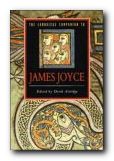 The Cambridge Companion to James Joyce contains eleven essays by an international team of leading Joyce scholars. The topics covered include his debt to Irish and European writers and traditions, his life in Paris, and the relation of his work to the ‘modern’ spirit of sceptical relativism. One essay describes Joyce’s developing achievement in his earlier works (Stephen Hero, Dubliners, and A Portrait of the Artist as a Young Man), while another tackles his best-known text, asking the basic question ‘What is Ulysses about, and how can it be read?’ The issue of ‘difficulty’ raised by Finnegans Wake is directly addressed, and the reader is taken through questions of theme, language, structure and meaning, as well as the book’s composition and the history of Wake criticism.
The Cambridge Companion to James Joyce contains eleven essays by an international team of leading Joyce scholars. The topics covered include his debt to Irish and European writers and traditions, his life in Paris, and the relation of his work to the ‘modern’ spirit of sceptical relativism. One essay describes Joyce’s developing achievement in his earlier works (Stephen Hero, Dubliners, and A Portrait of the Artist as a Young Man), while another tackles his best-known text, asking the basic question ‘What is Ulysses about, and how can it be read?’ The issue of ‘difficulty’ raised by Finnegans Wake is directly addressed, and the reader is taken through questions of theme, language, structure and meaning, as well as the book’s composition and the history of Wake criticism.
More on James Joyce
Twentieth century literature
More on study skills

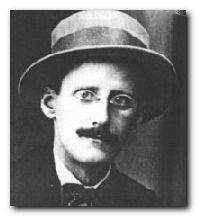 Harry Blamires, The New Bloomsday Book, London: Routledge, 1996.
Harry Blamires, The New Bloomsday Book, London: Routledge, 1996. The Cambridge Companion to James Joyce contains eleven essays by an international team of leading Joyce scholars. The topics covered include his debt to Irish and European writers and traditions, his life in Paris, and the relation of his work to the ‘modern’ spirit of sceptical relativism. One essay describes Joyce’s developing achievement in his earlier works (Stephen Hero, Dubliners, and A Portrait of the Artist as a Young Man). Another tackles his best-known text, asking the basic question ‘What is Ulysses about, and how can it be read?’ The issue of ‘difficulty’ raised by Finnegans Wake is directly addressed, and the reader is taken through questions of theme, language, structure and meaning, as well as the book’s composition and the history of Wake criticism.
The Cambridge Companion to James Joyce contains eleven essays by an international team of leading Joyce scholars. The topics covered include his debt to Irish and European writers and traditions, his life in Paris, and the relation of his work to the ‘modern’ spirit of sceptical relativism. One essay describes Joyce’s developing achievement in his earlier works (Stephen Hero, Dubliners, and A Portrait of the Artist as a Young Man). Another tackles his best-known text, asking the basic question ‘What is Ulysses about, and how can it be read?’ The issue of ‘difficulty’ raised by Finnegans Wake is directly addressed, and the reader is taken through questions of theme, language, structure and meaning, as well as the book’s composition and the history of Wake criticism.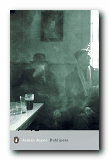 Dubliners is his first major work – a ground-breaking collection of short stories in which he strips away all the decorations and flourishes of late Victorian prose style. What remains is a sparse yet lyrical exposure of small moments of revelation – which he called ‘epiphanies’. Like other modernists, such as Katherine Mansfield and Virginia Woolf, Joyce minimised the dramatic element of the short story in favour of symbolic meaning and a more static aesthetic. This collection of vignettes features both real and imaginary figures in Dublin life around the turn of the century. The collection ends with the most famous of all Joyce’s stories – ‘The Dead’. It caused controversy when it first appeared, and was the first of many of Joyce’s works to be banned in his native country. Dubliners is now widely regarded as a seminal collection of modern short stories. New readers should start here.
Dubliners is his first major work – a ground-breaking collection of short stories in which he strips away all the decorations and flourishes of late Victorian prose style. What remains is a sparse yet lyrical exposure of small moments of revelation – which he called ‘epiphanies’. Like other modernists, such as Katherine Mansfield and Virginia Woolf, Joyce minimised the dramatic element of the short story in favour of symbolic meaning and a more static aesthetic. This collection of vignettes features both real and imaginary figures in Dublin life around the turn of the century. The collection ends with the most famous of all Joyce’s stories – ‘The Dead’. It caused controversy when it first appeared, and was the first of many of Joyce’s works to be banned in his native country. Dubliners is now widely regarded as a seminal collection of modern short stories. New readers should start here.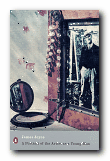 A Portrait of the Artist as a Young Man is Joyce’s first complete novel – a largely autobiographical account of a young man’s struggle with Catholicism and his desire to forge himself as an artist. It features a prose style whose complexity develops in parallel with the growth of the hero, Stephen Dedalus. The early pages are written from a child’s point of view, but then they quickly become more sophisticated. As Stephen struggles with religious belief and the growth of his sexual feelings as a young adult, the prose become more complex and philosophical. In addition to the account of his personal life and a critique of Irish society at the beginning of the last century, it also incorporates the creation of an aesthetic philosophy which was unmistakably that of Joyce himself. The novel ends with Stephen quitting Ireland for good, just as Joyce himself was to do – never to return.
A Portrait of the Artist as a Young Man is Joyce’s first complete novel – a largely autobiographical account of a young man’s struggle with Catholicism and his desire to forge himself as an artist. It features a prose style whose complexity develops in parallel with the growth of the hero, Stephen Dedalus. The early pages are written from a child’s point of view, but then they quickly become more sophisticated. As Stephen struggles with religious belief and the growth of his sexual feelings as a young adult, the prose become more complex and philosophical. In addition to the account of his personal life and a critique of Irish society at the beginning of the last century, it also incorporates the creation of an aesthetic philosophy which was unmistakably that of Joyce himself. The novel ends with Stephen quitting Ireland for good, just as Joyce himself was to do – never to return.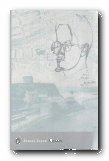 Ulysses (1922) is one of the greatest novels of the twentieth century, and it is certainly Joyce’s most celebrated work. He takes Homer’s Odyssey as a structural framework and uses it as the base to create a complex story of characters moving around Dublin on a single day in June 1904. Each separate chapter is written in a different prose style to reflect its theme or subject. The novel also includes two forms of the ‘stream of consciousness’ technique. This was Joyce’s attempt to reproduce the apparently random way in which our perceptions of the world are mixed with our conscious ideas and memories in an unstoppable flow of thought. There is a famous last chapter which is an eighty page unpunctuated soliloquy of a woman as she lies in bed at night, mulling over the events of her life and episodes from the previous day.
Ulysses (1922) is one of the greatest novels of the twentieth century, and it is certainly Joyce’s most celebrated work. He takes Homer’s Odyssey as a structural framework and uses it as the base to create a complex story of characters moving around Dublin on a single day in June 1904. Each separate chapter is written in a different prose style to reflect its theme or subject. The novel also includes two forms of the ‘stream of consciousness’ technique. This was Joyce’s attempt to reproduce the apparently random way in which our perceptions of the world are mixed with our conscious ideas and memories in an unstoppable flow of thought. There is a famous last chapter which is an eighty page unpunctuated soliloquy of a woman as she lies in bed at night, mulling over the events of her life and episodes from the previous day.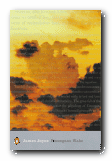 Finnegans Wake is famous in literary circles as a great novel which almost no one has ever read. Joyce said that he spent seventeen years of his life writing Finnegans Wake and that he expected readers to spend the rest of their lives trying to understand it. It continues where Ulysses leaves off in terms of linguistic complexity. Written and rewritten many times over, Joyce eventually decided to incorporate many languages other than English into the narrative. It is a fantastic crossword-puzzle of puns, parodies, jokes and linguistic invention which make enormous intellectual demands on the reader. This, in addition to the many arcane references and a very complex narrative make Finnegans Wake a literary experiment which has never been surpassed. It is one of the great unread masterpieces of twentieth century literature.
Finnegans Wake is famous in literary circles as a great novel which almost no one has ever read. Joyce said that he spent seventeen years of his life writing Finnegans Wake and that he expected readers to spend the rest of their lives trying to understand it. It continues where Ulysses leaves off in terms of linguistic complexity. Written and rewritten many times over, Joyce eventually decided to incorporate many languages other than English into the narrative. It is a fantastic crossword-puzzle of puns, parodies, jokes and linguistic invention which make enormous intellectual demands on the reader. This, in addition to the many arcane references and a very complex narrative make Finnegans Wake a literary experiment which has never been surpassed. It is one of the great unread masterpieces of twentieth century literature.
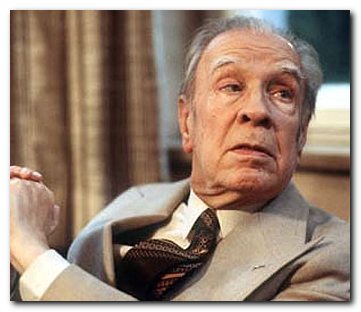
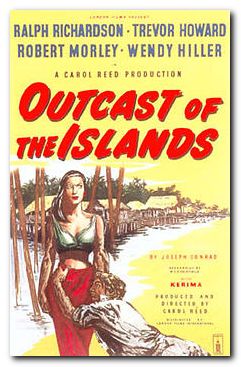
 1857. Joseph Conrad (full original name Jozef Teodor Konrad Korzeniowski) born December 3 in Berdichev (or vicinity) to Apollo Nalecz Korzeniowski and Evelina (Ewa) Bobrowska. Poland at that time is under the control of Russia.
1857. Joseph Conrad (full original name Jozef Teodor Konrad Korzeniowski) born December 3 in Berdichev (or vicinity) to Apollo Nalecz Korzeniowski and Evelina (Ewa) Bobrowska. Poland at that time is under the control of Russia.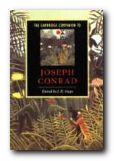 The Cambridge Companion to Joseph Conrad offers a series of essays by leading Conrad scholars aimed at both students and the general reader. There’s a chronology and overview of Conrad’s life, then chapters that explore significant issues in his major writings, and deal in depth with individual works. These are followed by discussions of the special nature of Conrad’s narrative techniques, his complex relationships with late-Victorian imperialism and with literary Modernism, and his influence on other writers and artists. Each essay provides guidance to further reading, and a concluding chapter surveys the body of Conrad criticism.
The Cambridge Companion to Joseph Conrad offers a series of essays by leading Conrad scholars aimed at both students and the general reader. There’s a chronology and overview of Conrad’s life, then chapters that explore significant issues in his major writings, and deal in depth with individual works. These are followed by discussions of the special nature of Conrad’s narrative techniques, his complex relationships with late-Victorian imperialism and with literary Modernism, and his influence on other writers and artists. Each essay provides guidance to further reading, and a concluding chapter surveys the body of Conrad criticism.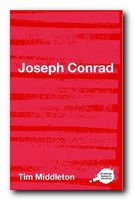 The Complete Critical Guide to Joseph Conrad is a good introduction to Conrad criticism. It includes a potted biography, an outline of the stories and novels, and pointers towards the main critical writings – from the early comments by his contemporaries to critics of the present day. Also includes a thorough bibliography which covers biography, criticism in books and articles, plus pointers towards specialist Conrad journals. These guides are very popular. Recommended.
The Complete Critical Guide to Joseph Conrad is a good introduction to Conrad criticism. It includes a potted biography, an outline of the stories and novels, and pointers towards the main critical writings – from the early comments by his contemporaries to critics of the present day. Also includes a thorough bibliography which covers biography, criticism in books and articles, plus pointers towards specialist Conrad journals. These guides are very popular. Recommended.
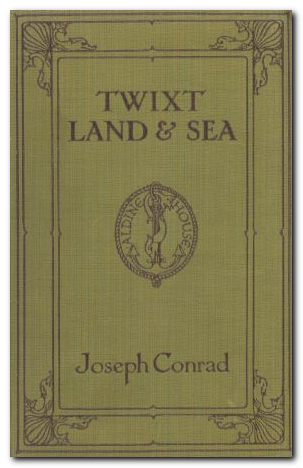
 Studying Fiction
Studying Fiction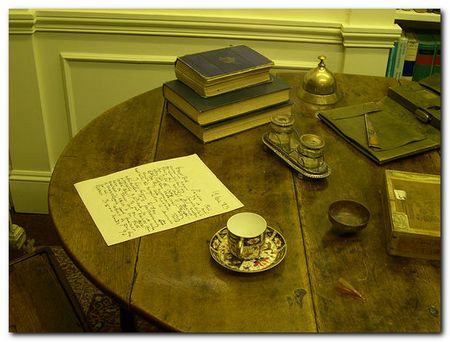
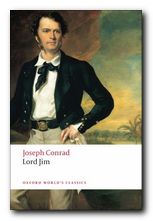 Lord Jim
Lord Jim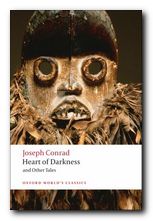 Heart of Darkness
Heart of Darkness